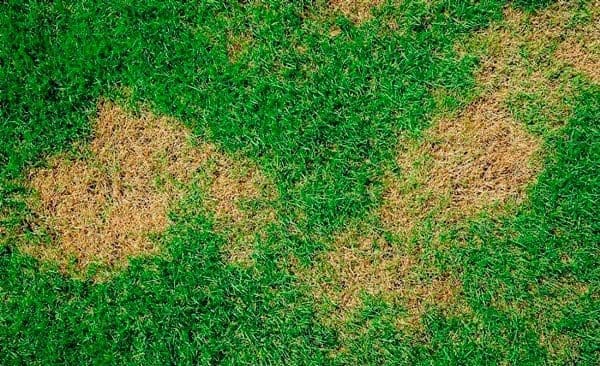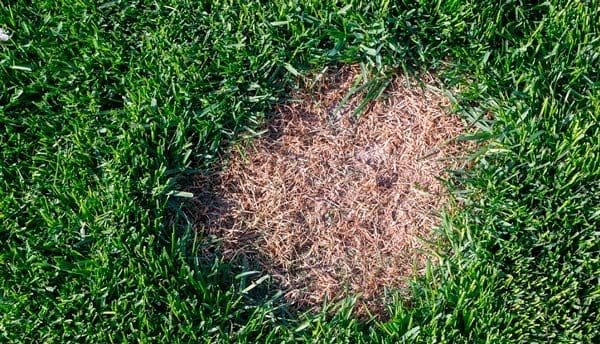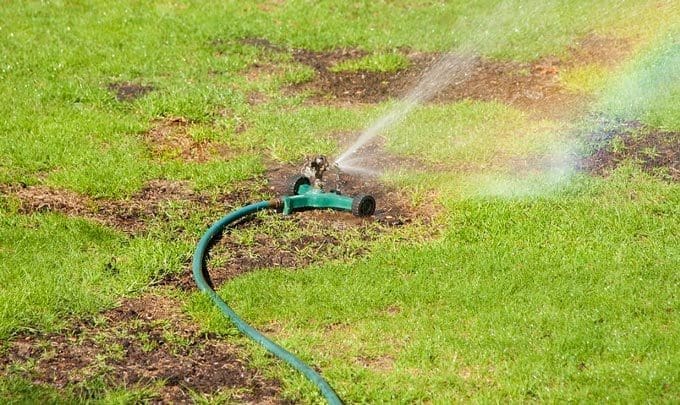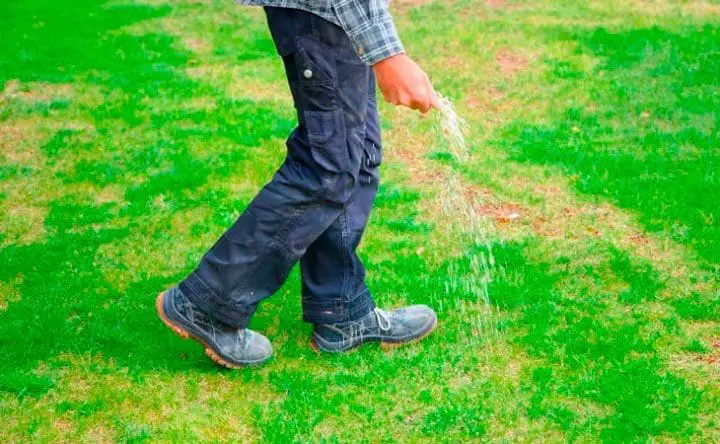Lawn fungus can quickly undo good landscaping work. Fungus can quickly spread, and once it reaches enough of the lawn, becomes extremely difficult to stop. That’s why Earth Development provides businesses with reliable, professional, and knowledgeable teams of lawn maintenance experts who understand just what it takes to get lawn fungus under control.
We believe it’s important not just to provide these experts, but also to ensure property owners know the basics of fungi identification in lawns across and when to take action. In this ultimate guide to lawn fungus, we’ll explore how to tell if your lawn has fungus, outline common lawn fungus symptoms, and discuss the measures you can take to get it back under control.
Remember – your landscaping is an extension of your company’s brand. A badly maintained lawn can quickly transform attractive commercial premises into something that looks run down and old. Whether you own a strip mall, a retirement home, a medical facility or a bank, your outdoor space is just as important as your indoor space – and we can help you keeping it look healthy, well-kept, and inviting.
Types of Lawn Diseases and Fungi, And How They Spread

As if it wasn’t nuisance enough, there are various lawn fungus types to look out for. Many of the symptoms are similar, and we’ll discuss how to tell if your lawn has fungus in the next section, but it’s important to be aware that there is more than one kind of lawn fungus or lawn disease.
One grass fungal disease will specifically target grass and leaves, while others infect the soil and prevent grass from growing. Others present themselves as dots throughout the lawn, and perhaps one of the most identifiable fungi appears as a fairy ring in turfgrass.
Fungi are spread primarily by wind and rain, but can even be spread with a lawnmower. If you’re unaware of a fungus problem on your lawn and use a lawnmower on infected parts of the grass, fungal spores can easily be spread to other parts of the land, speeding up the spread of the problem.
You’ll typically notice fungi growing in the dampest environments, so that may be under trees or in lower parts of the ground where water gathers.
The trouble with fungus is that it only presents itself once the disease has taken hold, and tackling those patches requires a good understanding of how the infection works. There are steps you can take to prevent lawn fungus problems, but it always starts with identifying symptoms.
How To Identify Lawn Fungus – The Main Symptoms

You might be wondering, “what does grass fungus look like?” In many instances, the tell-tale signs and symptoms are similar. However, with so many varieties of fungus out there, each species manifests itself differently.
Let’s take a look at some of the most common defining characteristics from the kind of fungus you might encounter on your lawn.
- Snow Mold:
Snow mold typically occurs in vascular plant species and moss, so if your grass has some moss, you may be more likely to see these. This kind of fungus typically appears late in the winter when the snow begins to melt, leaving behind a series of pale-colored circular patches. Some might be just a few inches wide, others several feet wide.
- Rust Disease:
Rust disease creates rust-like spots on leaves, plants, and grass. You should see the orange-reddish color on the grass, and may notice it on your clothes or shoes after walking on the grass.
- Red Thread Disease:
With red thread disease, you’ll notice straw-colored patches in your grass. The fungus is shaped irregularly and appears a light red or pink color.
- Take-all Patches:
With a take-all patch, the fungus infects and kills the roots o the grass, leaving behind circular changes in color throughout the lawn. You should notice red, yellow, and brown colors.
- Brown Patches:
This is probably one of the most common symptoms of lawn fungus. Because the fungus impacts the ability of grass to grow, brown patches of various shapes and sizes are very common.
- Dollar Spots:
Dollar spots are sunken, pale spots about the size of a dollar coin. They form a polka dot pattern across the lawn.
- Fairy Rings:
Fair rings are large rings of bleached or brown grass. They form a circle but only impact the circumference of the circle, with the grass in the center appearing normal.
- Mildew:
Mildew looks like a white film that appears over large sections of grass, particularly in the shaded areas.
Possible Causes to Consider

What causes lawn fungus? Lots of things! The best way to stop lawn fungus is knowing what causes it, too.
The following are some of the most common reasons why fungus grows in grass.
- Drought
- Mowing grass too low
- Overwatering
- Using the wrong fertilizer
- Using too much fertilizer
- High humidity
- Compacted soil
Preventing lawn fungus starts with healthy soil and proper maintenance, but even then, it often takes an expert eye to keep it at bay.
How Can I Solve the Problem?

Knowing how to treat grass fungus is important for any business with lawns, and at Earth Development, we share our knowledge with you.
Here are the most effective ways you can prevent lawn fungus growth.
- Fungicide and Fertilizer:
Feed your grass a slow-release, organic fertilizer. Nitrogen-blended fertilizer can also help prevent dollar spots.
Using a high-quality fertilizer gives your grass the best chance to grow healthy, and when used alongside a good quality fungicide, you’ll minimize the chance of growth.
- Mow Your Grass Properly:
Mowing grass extremely short might seem like a quick and easy way to minimize the frequency of mowing, but it can causes serious damage to your grass. The shorter the blades, the less light the grass is able to absorb from the sun.
And, as the grass gets less healthy, it becomes easier for weeds and fungus to take hold and destroy your lawn.
Remember to catch your clippings and remove them from the lawn, too, to stop fungus spores from being spread by the mower.
- Water Your Lawn in the Mornings:
It’s always wise to water your lawn between 6am and 10am. It gives the grass time to absorb water, and then plenty of time for the sun to dry it again during the day. Give your lawn 1.5 inches of water per week (including rainfall, if you get it).
Why Not Leave It To Our Local Lawn Maintenance Experts?
You can fight lawn fungus yourself, or you can leave it with our local experts to handle instead. At Earth Development, we provide landscaping services for commercial properties of all sizes. We know how to fix lawn fungus, and we keep lawns looking beautiful throughout the spring and summer.
Our lawn fungus treatment plans ensure that your commercial property looks good from the outside, and we take the burden of keeping it in top shape off our shoulders.
For a free quote or consultation, call the Earth Development team today. We’ll save you valuable time!
